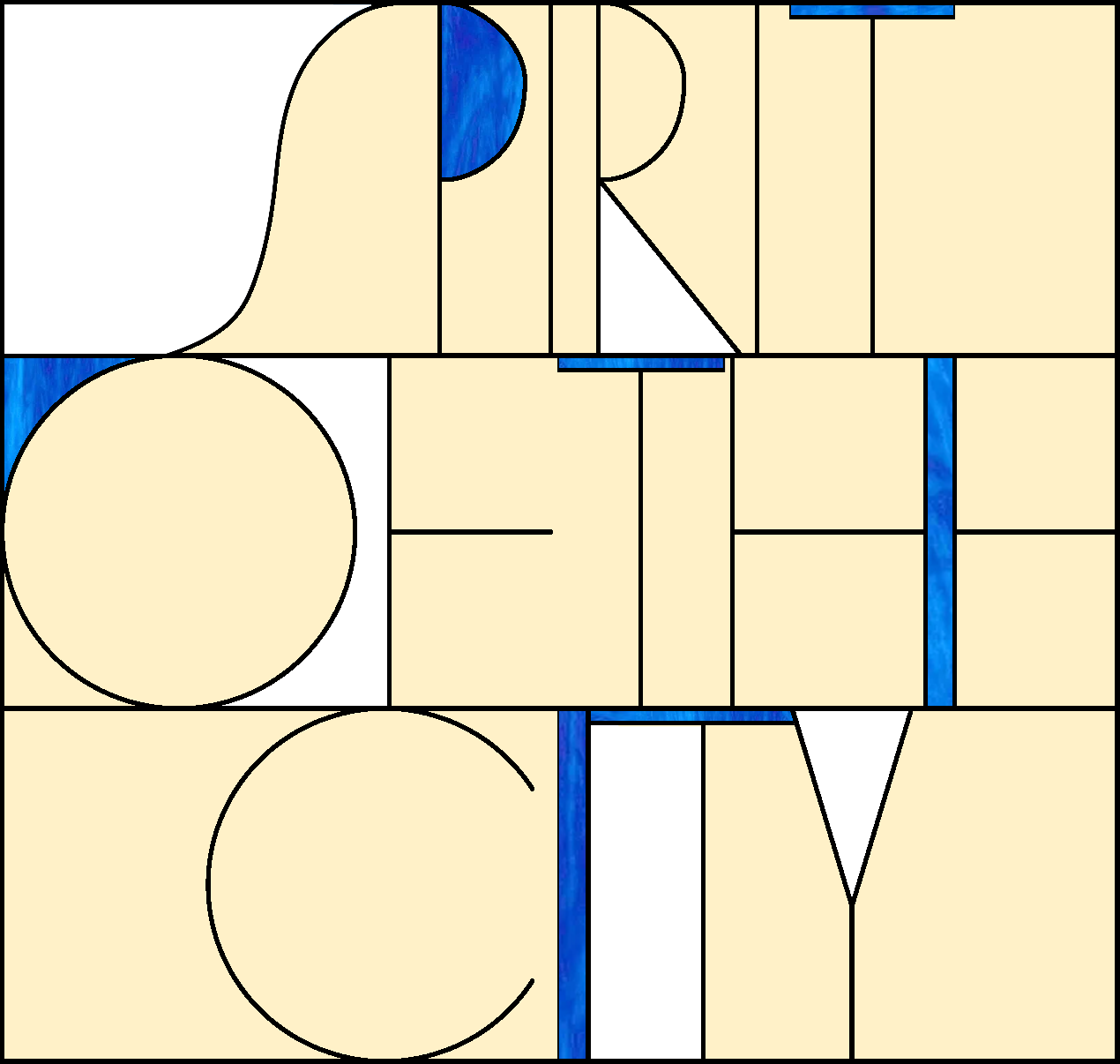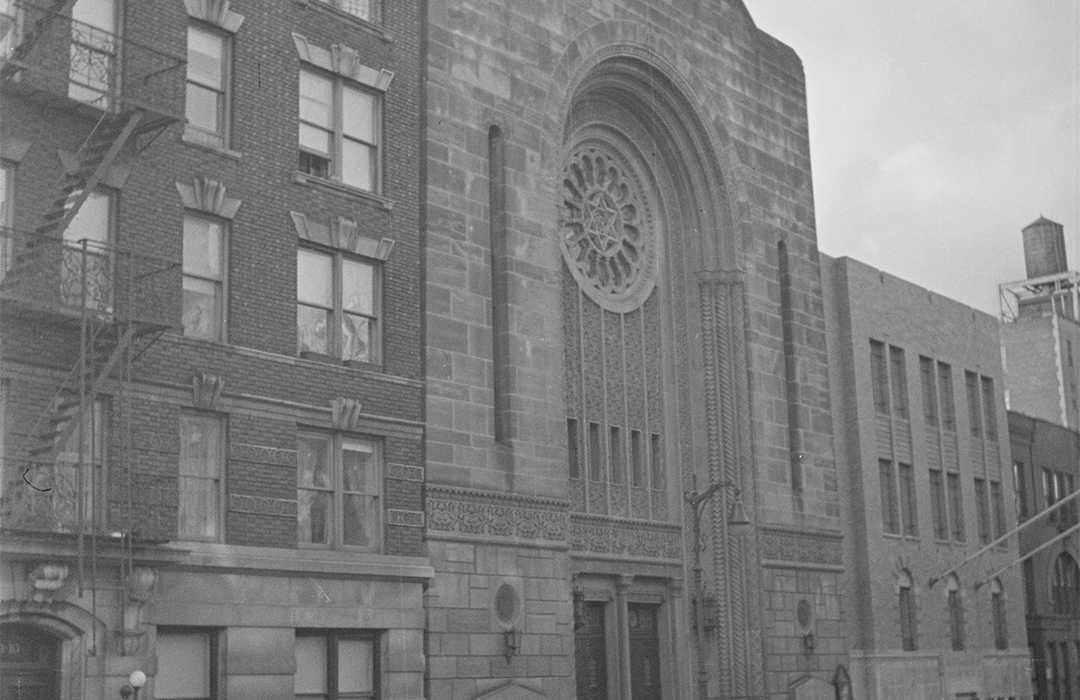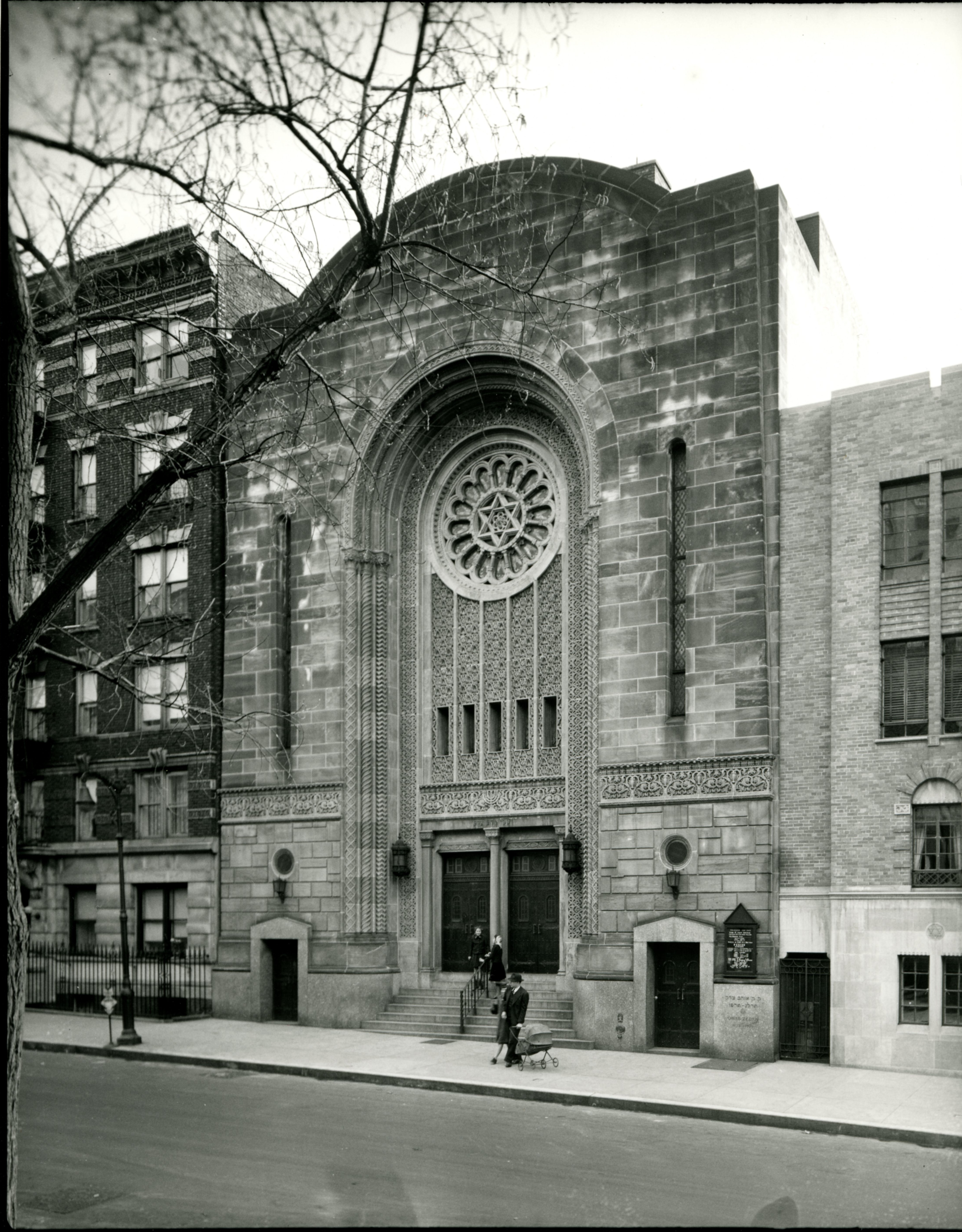
Congregation Ohab Zedek
118 West 95th Street
by Tom Miller
In 1910, the architectural firm of Moore & Landsiedel filed plans for a “two story brick and stone synagogue” for Congregation Pincus Elijah at 118 West 95th Street. The detail-specific plans called for “galvanized iron cornices, spruce lath, terra cotta wall coping, Mott’s enameled ironware, and tile floors with marble bases.” The cost of construction was projected to be $25,000, or about $827,000 in 2024.
Congregation Pincus Elijah was described in the 1997 Hazon Nahum as one of two shtibls, or European-style, immigrant synagogues, on the Upper West Side (the other being Congregation Agudath Achim) “where elegance, dignity, and decorum were not a priority and simply did not exist.” In an advertisement inviting worshipers for High Holidays in 1918 said in part:
Congregation Pincus Elijah is the only democratic synagogue on the West Side of Upper Manhattan where services, both decorous and inspiring, are being conducted in accordance with the traditions of orthodox Judaism.
According to Jeffrey S. Gurock and Jacob J. Schacter, in their 1997 A Modern Heretic and a Traditional Community, the congregation had only 70 members that year. They explained, “Most newly well-to-do Jews disdained shuls housed in modest sanctuaries where old world ritual and social practices were doggedly continued and decorum was sorely lacking.” But that was soon to change.
Congregation Ohab Zedek was “one of the oldest and most progressive religious bodies in greater New York…”
In its July 1923 issue, The Art reported that Congregation Pincus Elijah had merged with the First Hungarian Congregation Ohab Zedek, currently located on West 116th Street. This, said the article, “will bring about one of the largest Orthodox Jewish Congregations in America.” Congregation Ohab Zedek was organized in August 1873 “by a small group of immigrants,” according to The American Hebrew. By now, it said, Congregation Ohab Zedek was “one of the oldest and most progressive religious bodies in greater New York. Along with the merger would come a new house of worship. The Ark noted, “The plans include the erection in the near future of an additional synagogue by Ohab Zedek on the West Side…intended to be one of the largest in the city.”
Two years later, architects Charles B. Meyers and Herman H. Sohn were commissioned to replace the 1910 shul with a magnificent new structure. The cornerstone was laid on May 13, 1926, attended by dignitaries including Mayor James Walker. The New York Times reported that contributions of $50,000 toward construction costs were received that day.
On August 29, 1926, The New York Times reported, “The new upper west side Synagogue of the First Hungarian Congregation Ohab Zedek…was completed last week.” Meyers and Sohn had produced a monumental Moorish-style edifice. A flight of steps rose to the double entrance within a soaring, layered arch and stained glass rose window. The stoic stone façade was broken horizontally by a wide band course intricately carved with twisting, flowering vines and, directly over the entrance, a menorah. Complex Moorish designs filled the arch.
The building was formally opened on September 4, 1926, and dedicated “with impressive ceremonies” on the afternoon of April 10, 1927. In reporting on the dedication, The New York Times remarked, “Beginning as a small Hungarian Jewish congregation on Norfolk Street, on the lower east side, it is now considered one of the city’s influential orthodox congregations.”
Within a decade, this congregation and others throughout America perceived a growing threat from abroad. On April 1, 1934, five years before war would erupt in Europe, Rabbi William Margolis told his congregation in part,
The stupendous exhibitions of incredible diabolism of which wartime Germany was guilty are recrudescent in Nazi Germany today. At that time, it took the courage of the armies of civilized nations to save the world. And now, the pleas and protests of the leads of civilization have availed nothing. Hitler cannot understand the language of peace. Civilization has declared Hitler guilty, and now civilization must declare war.
“Beginning as a small Hungarian Jewish congregation on Norfolk Street, on the lower east side, it is now considered one of the city’s influential orthodox congregations.”
Rabbi Margolis was born in Lithuania and was ordained at the age of 18. A year after his fiery sermon on Hitler, he died at the age of 48 of coronary thrombosis.
Following Rabbi Margolis’s lead, Rabby Zev Zahavy repeatedly took to the pulpit to express political outrage. On October 15, 1950, for instance, The New York Times headlined an article, “Victory In Korea Called A Rebuke / Rabbi Zahavy Says it Serves as Warning to Adventurers in ‘Petty Imperialism,” and the following year, on January 21, 1951, the newspaper began an article saying, “The rejection by the Chinese Communists of the United Nations’ cease-fire proposal in Korea brands both Russia and the present regime in China as ‘patrons of brute force and power,’ Rabbi Zev Zahavy said yesterday in a sermon at Congregation Ohab Zedek.”
The synagogue continues to serve a large orthodox congregation. In 2005, a member of the congregation, Chaim Steinberger, published a history of the shul, First Hungarian Congregation Ohab Zedek. In 2017, Charles B. Meyers’s and Herman H. Sohn’s prodigious stone building was listed on the National Register of Historic Places.
Tom Miller is a social historian and blogger at daytoninmanhattan.blogspot.com
Building Database
Explore UWS Religious Heritage
Be a part of history!
Stay local to support the nonprofit currently at 118 West 95th Street:



